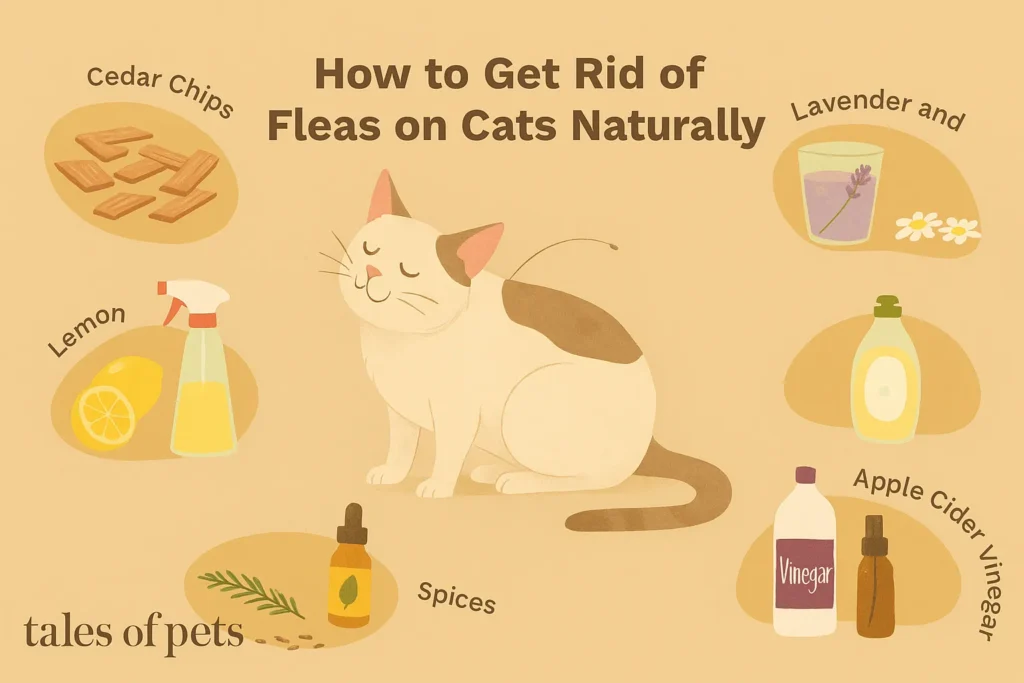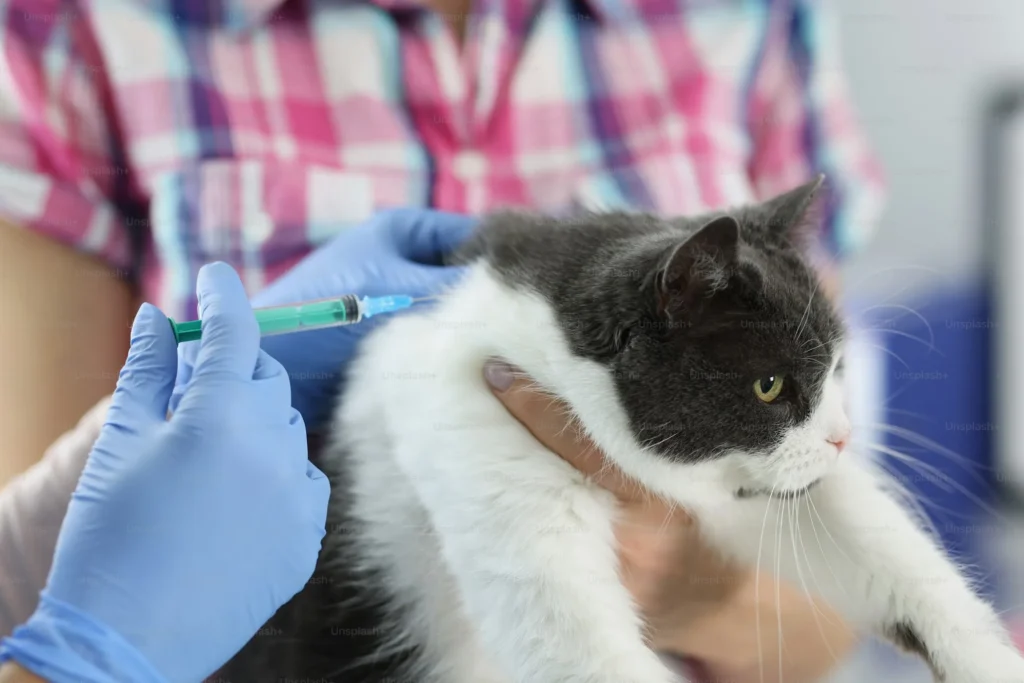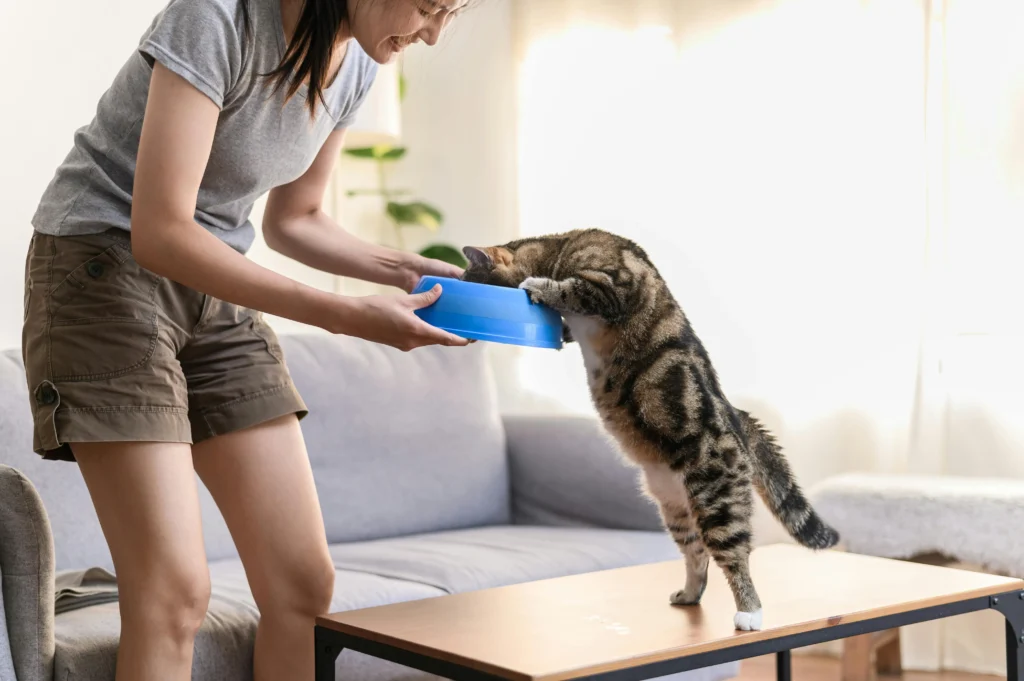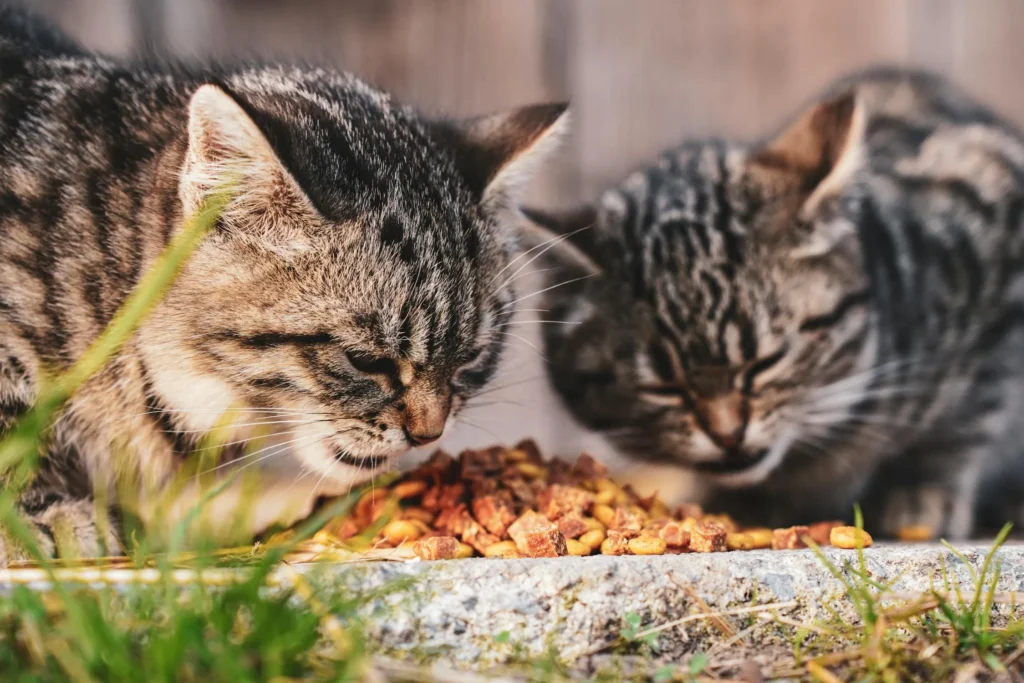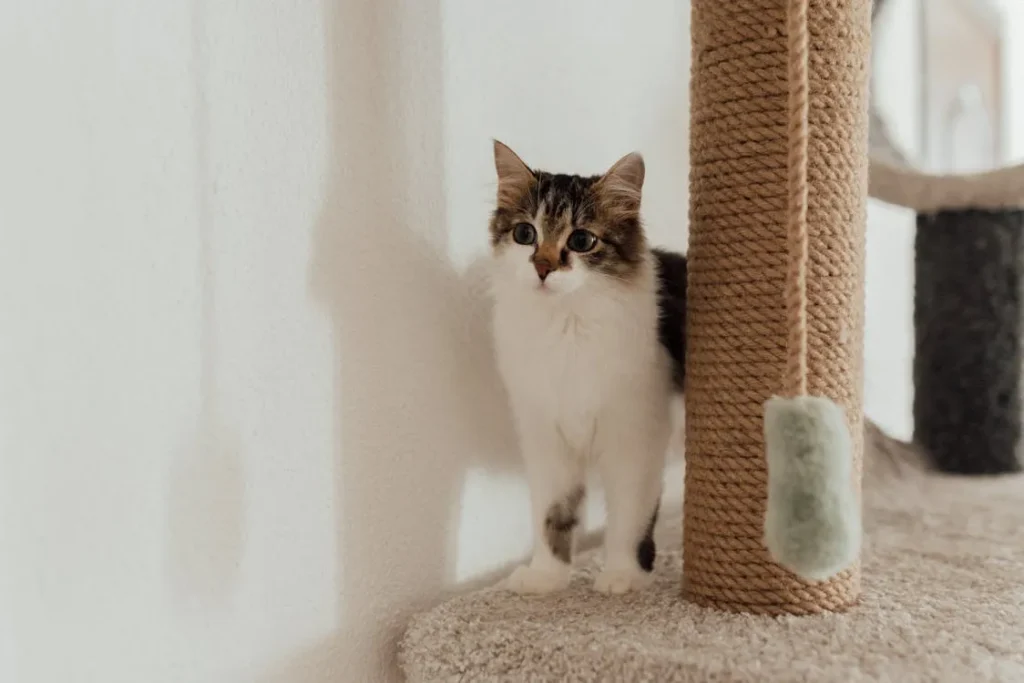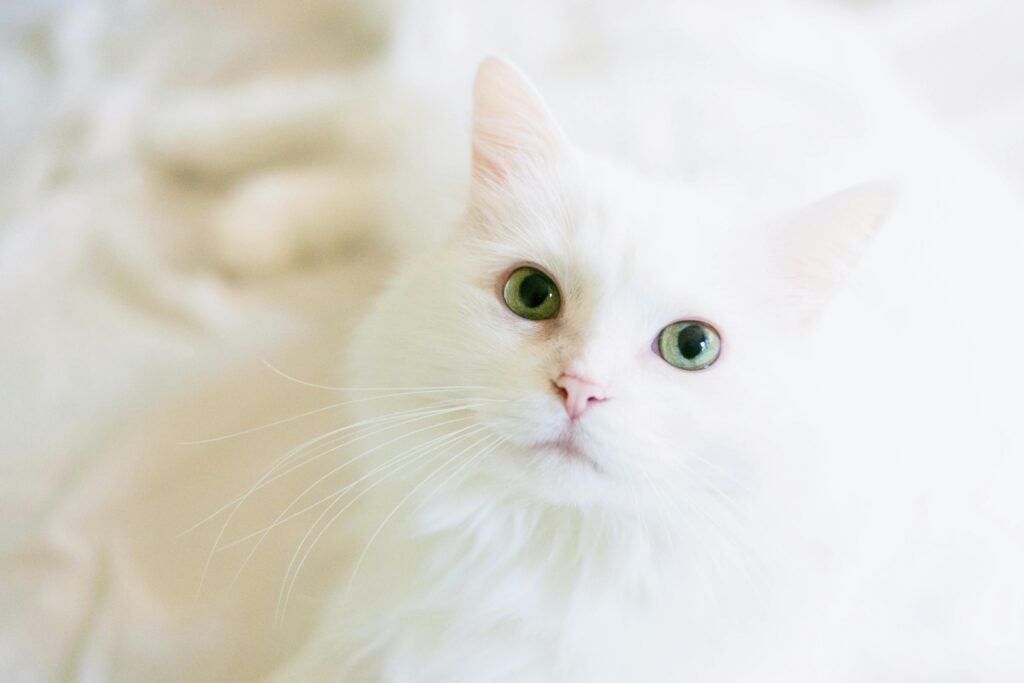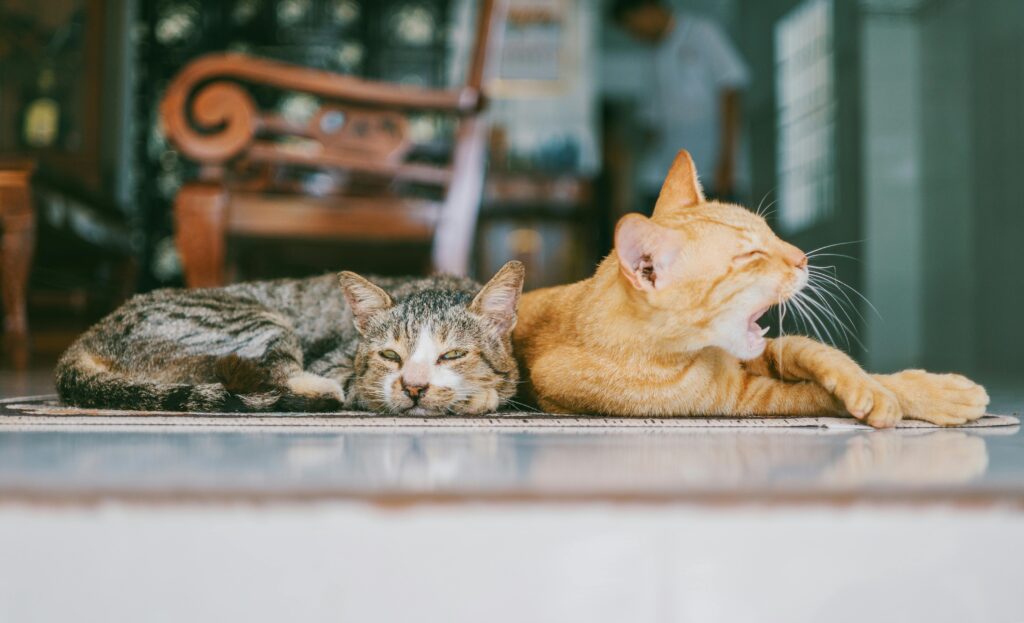Blood In cat Stool and What It Means
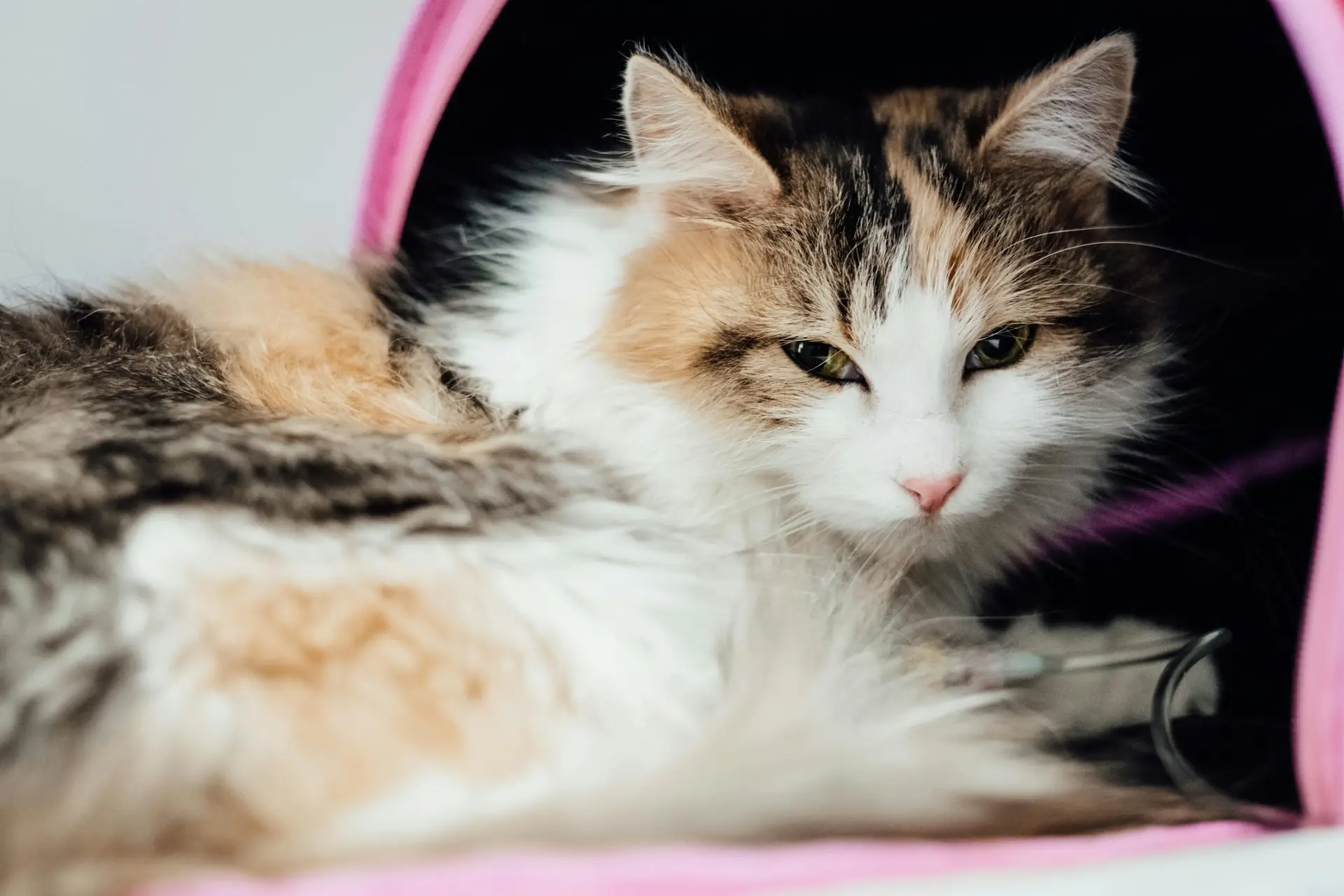
Blood in your cat stool can be alarming. It’s a sign that something might be wrong.
This issue can range from minor to serious. Understanding the potential causes is crucial for your cat’s health.
Common causes include dietary changes, infections, or parasites. Stress and anxiety can also lead to digestive issues.
Blood in cat urine is a separate concern but equally important. It can indicate urinary tract infections or bladder stones.
Observing the color and consistency of the blood can provide clues. Bright red blood may suggest a lower intestinal issue, while dark blood could indicate an upper gastrointestinal problem.
Knowing when to seek veterinary care is vital. Immediate attention is needed if your cat shows distress or if the blood persists.

What Does Blood in Cat Stool Look Like?
Blood in cat stool can vary in appearance. Knowing what to look for can help identify potential causes.
The blood may appear bright red or dark and tarry. Bright red blood often indicates bleeding in the lower intestines.
Dark, tarry blood can suggest an issue higher up in the digestive tract. Such blood could mean a more serious condition.
When examining your cat’s stool, look for these factors:
- Bright red blood
- Dark, tarry blood
- Consistency of the stool
- Presence of mucus
Keep an eye on the stool’s consistency. Any unusual textures could indicate additional problems.

If you notice any blood, take note of other symptoms. Observing your cat’s behavior is equally crucial.
Remember, cats excel at hiding pain. Subtle changes in behavior should prompt concern.
Common Causes of Blood in Cat Stool
Blood in cat stool can arise from various causes. These can range from minor to serious.
Understanding potential triggers can guide timely intervention.
Dietary changes often impact a cat’s digestion. Switching food brands or types can cause temporary issues.
Food allergies also contribute to gastrointestinal distress. Some ingredients may not agree with your cat.
Infections and parasites are common culprits. They can inflame the intestines, leading to bleeding.
Cats that go outdoors are more susceptible to such risks. Regular check-ups can help prevent these issues.
Here are some typical causes:
- Dietary changes
- Food allergies
- Infections
- Parasites
Stress and anxiety further complicate matters. A stressed cat may experience digestive problems, including blood in stool.
Gastrointestinal diseases are another possible factor. These conditions often require medical intervention.
Other causes include constipation and anal gland issues. These problems are particularly prevalent in sedentary cats.
Less common causes may include:
- Gastrointestinal diseases
- Constipation
- Anal gland issues

Early detection is crucial for treatment. Monitoring your cat’s habits can lead to early intervention.
Always consult a veterinarian for unexplained symptoms. Professional guidance can ensure proper diagnosis and treatment.
Blood in Cat Stool vs. Blood in Cat Urine: Key Differences
Finding blood in cat stool is concerning, but it’s crucial to differentiate it from blood in cat urine. Both conditions signal different health issues. Understanding these differences can help in determining the appropriate action.
Blood in cat stool often links to digestive troubles. It might indicate parasites, dietary problems, or gastrointestinal diseases. If the blood appears bright red, it usually signifies a lower intestinal issue.
Conversely, blood in cat urine often points to urinary tract problems.
These might include infections, bladder stones, or more serious conditions like kidney disease. Urinary issues often require swift veterinary attention.
Key distinctions include:
- Cat Stool: Digestive related, often red.
- Cat Urine: Urinary related, sometimes harder to detect.
- Necessary Action: Different vet evaluations needed.

In both cases, early detection is vital. Always consult a vet for a definitive diagnosis. Quick action improves outcomes for both conditions.
When Is Blood in Cat Stool an Emergency?
Detecting blood in your cat’s stool can be alarming. Some situations require immediate action. Recognizing these can protect your cat from severe health issues.
Emergency situations include heavy bleeding or frequent blood presence.
If the cat shows signs of distress or dehydration, this can indicate an urgent problem. Rapid weight loss or severe lethargy are also concerning symptoms.
If symptoms persist or worsen, it’s time for urgent care. Immediate intervention is essential to rule out serious conditions. Listed below are signs that necessitate emergency veterinary attention:
- Continuous or copious blood in stool
- Cat appears in pain or is vomiting
- Sudden changes in behavior or appetite
In these scenarios, swift response can save lives. Contact your vet promptly if these emergencies arise. Early medical intervention ensures the best possible outcome for your cat.
Other Symptoms to Watch For
Blood in a cat’s stool can be the start of broader health issues. Observing your cat for accompanying symptoms helps in early identification of problems. Being vigilant is crucial.
Various symptoms can align with bloody stool. Changes in appetite or weight may signal an underlying issue.
Vomiting or diarrhea alongside blood can compound concerns.
Pay attention to behavior changes. Increased lethargy or unusual hiding might indicate discomfort. Symptoms paired with blood often demand medical evaluation. Here’s a list of symptoms to look out for:
- Vomiting
- Diarrhea
- Changes in appetite
- Lethargy
- Unusual hiding behaviors
Monitor these symptoms closely. If they occur with bloody stool, consult your vet. Early action can prevent further health complications. Stay attentive to changes in your cat’s health for their well-being.
Diagnosing the Cause: What to Expect at the Vet
If you notice blood in your cat’s stool, visiting the vet is a vital step. The vet will conduct a thorough examination to identify potential causes. This process is often systematic and detailed.
Initially, the vet will ask about your cat’s medical history. They may inquire about recent changes in diet or behavior. This information helps shape the diagnostic approach.
Next, diagnostic tests may be performed. Blood tests can reveal underlying infections or inflammation. A fecal exam checks for parasites or bacteria. Imaging, such as X-rays or ultrasounds, can provide a closer look at the gastrointestinal tract. During the visit, expect the following diagnostic steps:
- Comprehensive physical examination
- Blood tests for infections or inflammation
- Fecal examination for parasites or bacteria
- Imaging studies (X-ray, ultrasound) for internal assessment
Results from these tests guide the vet in forming a diagnosis. Understanding the root cause is crucial for effective treatment. Prompt diagnosis aids in preventing further health issues, ensuring your cat’s comfort and health.
Treatment Options for Blood in Cat Stool
Treatment varies depending on the cause of the blood in the stool. A targeted approach is essential for effective recovery. Each case may require a unique plan.
For mild conditions, dietary changes might suffice. Introducing high-quality cat food can aid in digestive health. Sometimes, a hypoallergenic diet is recommended for food allergies.
For infections or parasites, medications are typically necessary. Deworming can effectively tackle worm infestations. Antibiotics might be prescribed for bacterial infections. Monitoring progress is crucial to ensure these treatments work.
In severe cases, more involved interventions might be needed. Surgery is rare but can be essential for conditions like obstructions. Continuous follow-up care ensures the resolution of symptoms. Here is a summary of potential treatments:
- Dietary adjustments, including high-quality or hypoallergenic food
- Antiparasitic medications for worm removal
- Antibiotics for bacterial infections
- Surgery for critical conditions like obstructions
Close collaboration with your vet helps tailor the treatment plan. Correct implementation and diligence can improve your cat’s health. Remember, timely intervention is key to positive outcomes.
Preventing Blood in Cat Stool and Promoting Digestive Health
Keeping your cat’s digestive system healthy is crucial. Prevention is always better than cure. Regular preventive measures can save your feline from discomfort.
A balanced diet plays a vital role in your cat’s digestive health. Ensure high-quality food that suits your cat’s age and health needs. Regular meals with proper nutrients reduce the risk of dietary-related issues.
Routine veterinary check-ups help catch potential problems early. Vaccinations and deworming should remain up to date to prevent infections and parasites. Creating a stress-free environment also supports overall health.
Consider these proactive steps:
- Provide a nutritious, balanced diet
- Schedule regular veterinary visits
- Maintain up-to-date vaccinations and deworming
- Create a low-stress living space

These practices contribute to a healthier, happier cat. Awareness and consistency are key factors in preventing health problems. With these steps, you can ensure a better quality of life for your beloved pet.
Frequently Asked Questions About Blood in Cat Stool
Cat owners often have many questions regarding blood in their cat’s stool. Understanding these concerns can offer peace of mind and guidance on taking action. Here are some common questions.
What should I do if I notice blood in my cat’s stool? Observing the frequency and any other symptoms is crucial. It’s advised to consult with a veterinarian for personalized advice and evaluation.
When should I worry about blood in my cat’s stool? Immediate veterinary attention is necessary if your cat appears distressed, lethargic, or dehydrated. Persistent cases also warrant professional evaluation.
Consider these quick answers to common queries:
- What’s the immediate action? Contact a vet.
- When is it an emergency? If severe symptoms appear.
- How to detect it early? Monitor habits regularly.
Seeking reliable information and professional advice is essential for your cat’s health. Being proactive can prevent complications and promote well-being.
Conclusion: Taking Action for Your Cat’s Health
Ensuring your cat’s well-being requires vigilance and informed decisions. Blood in cat stool should never be ignored, as it can indicate a range of health issues. Prompt attention and consultation with a veterinarian can make a significant difference.
Understanding the potential causes helps in making informed decisions about your pet’s care. Regular veterinary check-ups, a balanced diet, and a stress-free environment promote digestive health.
By staying attentive and proactive, you can help your feline companion live a healthy and happy life. Prioritizing your cat’s health ensures quick intervention, preventing serious complications down the road.
Note: If you are facing same issue with your Dog go read Dog pooping blood. Keep your companion healthy and safe. <3

 by
by 